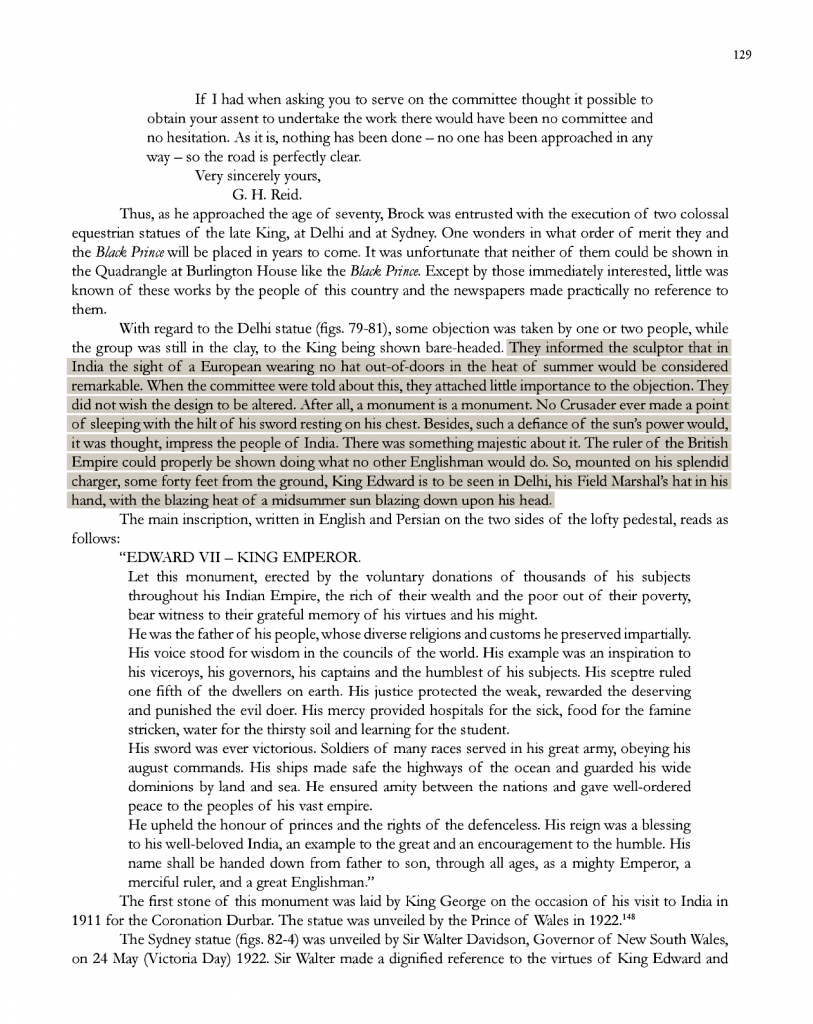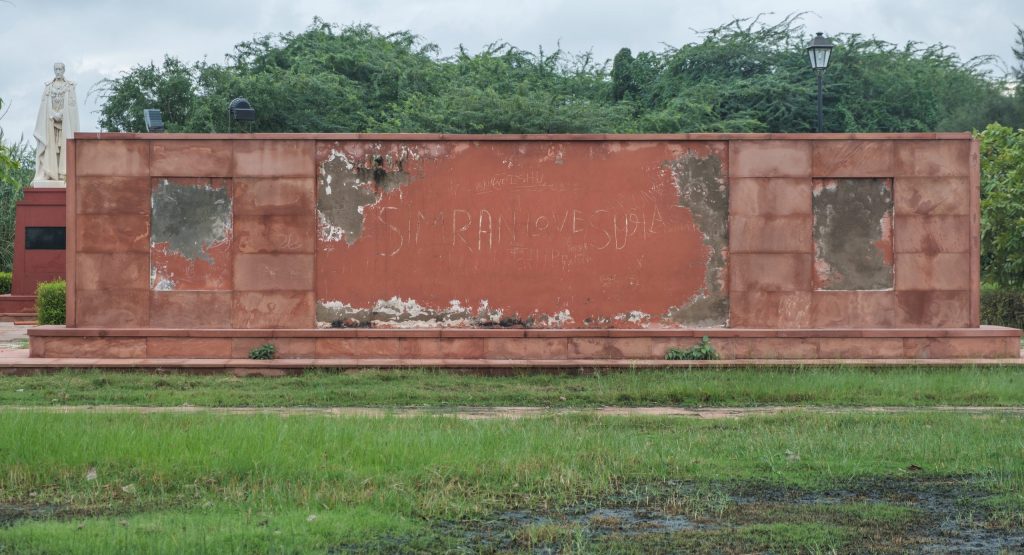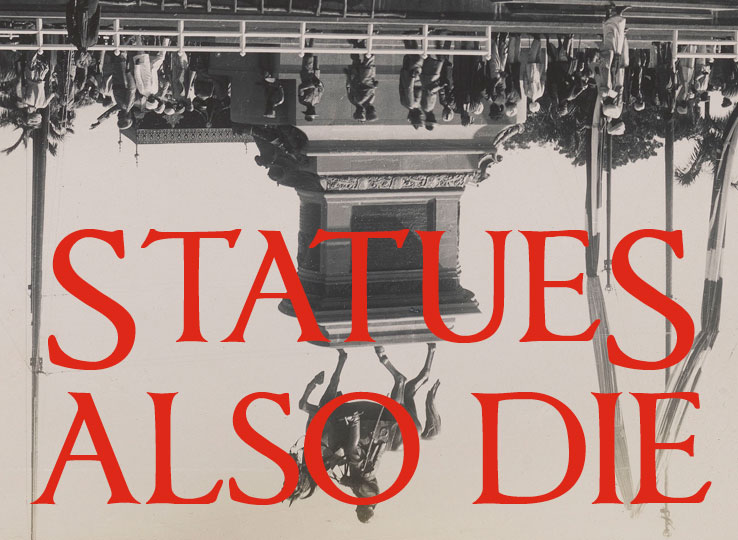
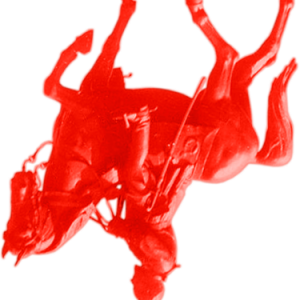
↑
Use the rhyme to explore the story; skip around or scroll down to go chronologically
Click on the red icon of Eddie to return to this page
Click on images to expand
This page is best viewed on desktop
→
Poor little soldier boy, playing make-believe
Your castle is crumbling, it’s time for you to leave
Leave little soldier boy, before the setting sun
The wind is picking up, it’s time for you to run
Run little soldier boy, the tide is coming in
You’re being swept out to sea, it’s time for you to swim
Swim little soldier boy, now you’re moving slow
You can’t fight the sea, it’s over now, just let it go
Go little soldier boy, swallowed by the deep
Your kingdom has fallen, it’s time for you to sleep
Sleep little soldier boy, now a dream of yore
Carried by the current, you’ve been washed ashore
There’s the little soldier boy, lay him down to rest
What are you doing, don’t prop him up, a corpse possessed
Grim little soldier corpse, put on display
Perfumed and preserved, unable to decay
Tragic little soldier boy, sitting on his steed
Forced to soldier on, still waiting to be freed
One little soldier boy, his story yet undone
For god’s sake help him down, and then there’ll be none.
I • Edward VII as princeling and king
II • It turns out India is a complicated place
III • Eddie stands in for Edward’s “legacy”
IV • The Indians are not impressed
V • The Indians rid themselves of Eddie
VI • Eddie’s corpse is exhumed and purchased
VII • Eddie’s restless ghost roams Toronto
VIII • It’s hard work maintaining a corpse
IX • Eddie is in a pitiable, pathetic state
X • Do the right thing, R.I.P. Eddie
[3] • 1846 • Edward would remain a boy prince under his mother’s shadow until she died when he was 59 years old. When he was 16, she wrote in her journal, “his intellect alas! is weak, which is not his fault but what is his fault is his shocking laziness”.[4] After his marriage to a princess of her choosing at 21, “It shocks me to see how stupid and obtuse he is”,[5] and that she worried about the “poor country with such a terribly unfit, totally unreflecting successor! He does nothing!”. She maintained this opinion of her son throughout her life. •
[7] • 1977 • This doll of Edward was made for the exhibition Royal Box, which was about the relationship between royalty and the theatre. At 17, he asked his mother’s permission to join the army, was made lieutenant-colonel straight away and denied real military experience, a royal doll in costume. He took up hunting, kept horses that he entered in races, and became involved in an illegal gambling scandal. He was fond of the theatre, but mostly of actresses. Kept firmly out of any politics of consequence by his mother’s opinion of him, he came to embody the stereotype of the moneyed princeling. •
[8] 2013 • & [9] 2001 • His frequent affairs with servants, actresses, his friends’ wives, and his (mis)treatment of women led to nicknames like “The Playboy Prince” and “Edward the Caresser”. These biographies are two of many with similar subtitles. •
[10] 1975 • In this brief scene from the television series Edward the Seventh, he is visiting India when he finds out his mother has named herself “Empress of India”, and is interrupted by a friend with whose wife he was rumoured to have had an affair. •

[11] • 1901 • This March 1901 cover of Puck featuring Edward two months after his coronation has an inset cartoon of Louis XIV that reads, “You see at once that majesty is made out of the wig, the high-heeled shoes, and cloak, all fleur-de-lis bespangled… Thus do barbers and cobblers make the gods that we worship”. The accompanying article discusses “the relation which a government bears to the sense on humour developed by its people; and that those various phenomena should have been catalogued which indicate the ultimate extinction of the monarchical idea through the simple process of its becoming too funny”. •
Approximately half of the 565 princely states that, along with 17 provinces, tenuously constituted “British India”, home to 294 million people speaking 122 major languages. Outside the enforced fiction of colonization, and until India’s independence in 1947, no such country could be said to exist at all. What would it mean to claim to have “dominion” over such a territory, especially for a 60-year-old perpetual prince with no political or military experience? •
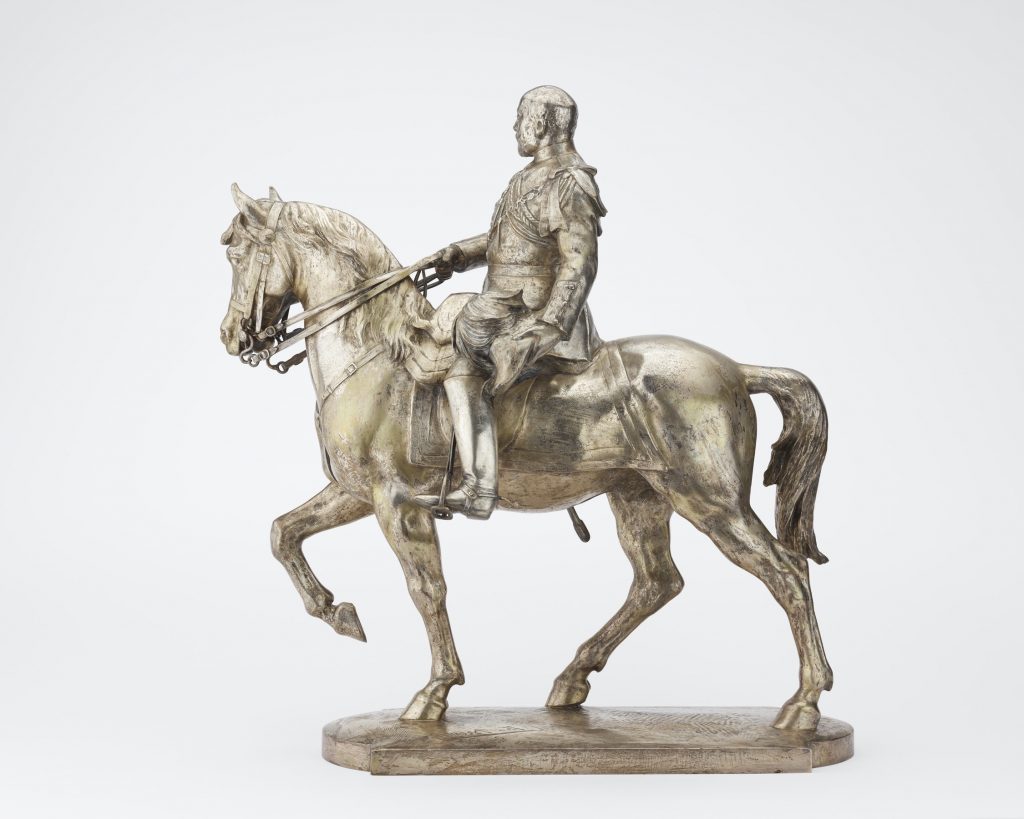
[14] • 1911 • This silver toy of Eddie, was presented to his son, George V, to reassure him as to its realization, in Delhi, December 1911, when he laid the monument’s first stone. •
[15] Ozymandias by Shelley —
I met a traveller from an antique land
Who said: “Two vast and trunkless legs of stone
Stand in the desert. Near them, on the sand,
Half sunk, a shattered visage lies, whose frown,
And wrinkled lip, and sneer of cold command,
Tell that its sculptor well those passions read
Which yet survive, stamped on these lifeless things,
The hand that mocked them and the heart that fed:
And on the pedestal these words appear:
“My name is Ozymandias, king of kings:
Look on my works, ye Mighty, and despair!”
Nothing beside remains. Round the decay
Of that colossal wreck, boundless and bare
The lone and level sands stretch far away”. •
[16] from Eighteen Hundred Eleven by Barbauld —
And thinks ’t thou, Britain, still to sit at ease,
An island Queen amidst thy subject seas,
While the vext billows, in their distant roar,
But soothe thy slumbers, and but kiss thy shore?
To sport in wars, while danger keeps aloof,
Thy grassy turf unbruised by hostile hoof?
So sing thy flatterers; but, Britain, know,
Thou who hast shared the guilt must share the woe.
Nor distant is the hour; low murmurs spread,
And whispered fears, creating what they dread;
Ruin, as with an earthquake shock, is here. •
[17] • 1862 • This photograph is from one of Edward’s many visits to the ruins of ancient empires, a fascination of his. These statues were damaged in a 27 BCE earthquake, and, along with another statue of Ramses II, misnamed “Memnon”. After that statue’s theft, its arrival at the British Museum was anticipated by Shelley’s Ozymandias. •
[18] [19] [20] • 1920 • This report of the events surrounding the Jallianwala Bagh massacre of April 1919 in Amritsar — where a protesting crowd of Indians was fenced in and shot at until all ammunition was expended — describes the “educational” aim of the British soldiers, as well as the treatment of students at local schools and universities who failed to demonstrate sufficient respect for the Crown. News of the massacre was suppressed until the following year, and it was during the resulting period of unrest that Eddie was installed in Delhi. •
[21] [22] • 2015 • On both sides of the globe, Indians and their children were being violently educated in the ways of Empire, while idealistic liberal schools for non-Indian children proliferated, as did monuments dedicated to people who it was desirable should be seen as responsible for implementing those ideals. •
[23] from Monuments by Sklarew —
[…] What yardstick
by which to measure importance? To measure earthly
agency? Each of us has monuments in the bone case of memory.
Earth-
bound, I take my sac of marble and carry it down lonely city streets where
our
generals on horseback and a tall bearded man keep watch over all their
citizens. •
[28] • 2021 • Like other such walls in Delhi’s Coronation Park, this one was designed to hold a description of the colonial histories of English statues relocated there from across Delhi. Instead, it has been engraved with the personal histories of post-colonial lovers. This one states: “BABU ♥ ISHU”, “SIMRAN ♥ SURIA”, “JAMSHED ♥ KARUNA”, “FARYAB ♥ FAREEBA”, “PRIANKA ♥ GAURAV”, and “B ♥ R”. These names describe relationships across cultural and religious boundaries in a country that did not exist until such relationships, and millions like them, made it so. This wall honours their efforts towards India’s self-determination. •
[31] • 2021 • In 2011, the Indian government initiated a plan to redevelop and redesign the park to retell the stories of Eddie’s companions, but due to an overwhelming lack of public interest, no progress has been made. A few security guards are posted at the park. One of them, Anil Tomar, has this to say: “Wasn’t he an English king? Look at his clothes now. What has been built should be maintained well. If this park is closed, I’ll have to go looking for another job”. In any self-respecting post-colonial country, the debate over statues has long been settled; if Eddie and his ilk are not contributing to the local economy, they don’t matter. The king is dead, and no one seems to have noticed. Soon the plants will have taken everything. Nothing will remain. •
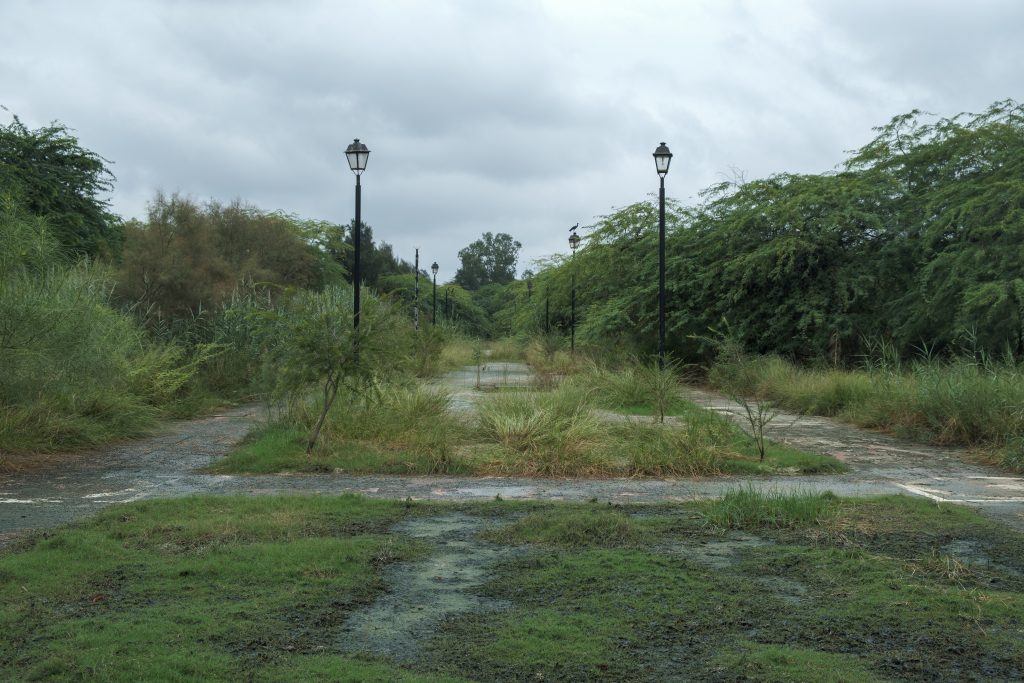
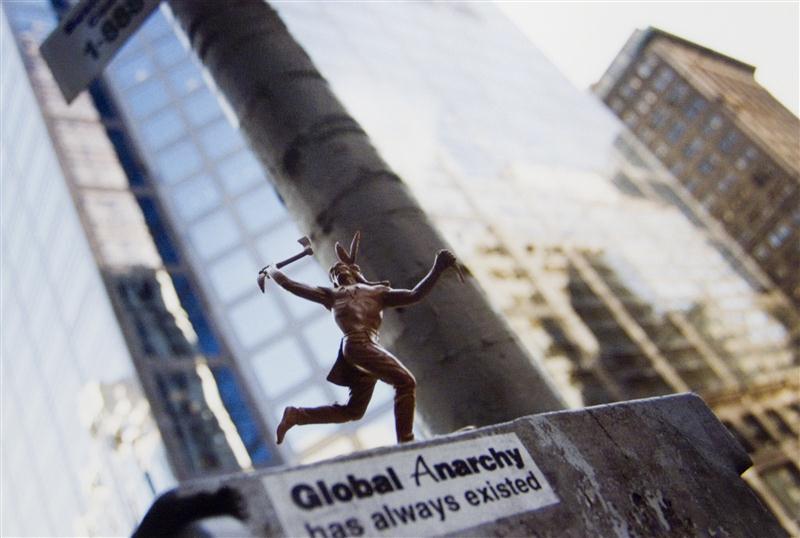
[32] • 2001 • A figure known as Buffalo Dancer bears witness to a sign stating, “Global Anarchy has always existed” in this work by Jeff Thomas. •
[33] Freedom by Tagore —
Freedom from fear is the freedom I claim for you, my Motherland! — fear, the phantom demon, shaped by your own distorted dreams;
Freedom from the burden of ages, bending your head, breaking your back, blinding your eyes to the beckoning calls of the future;
Freedom from shackles of slumber wherewith you fasten yourself to night’s stillness, mistrusting the star that speaks of truth’s adventurous path;
Freedom from the anarchy of destiny, whose sails are weakly yielded to blind uncertain winds, and the helm to a hand ever rigid and cold as Death;
Freedom from the insult of dwelling in a puppet’s world, where movements are started through brainless wires, repeated through mindless habits; where figures wait with patient obedience for a master of show to be stirred into a moment’s mimicry of life. •
[35] • 1958 • The then-polluted Don River was chlorinated and temporarily perfumed in advance of the visit of Edward’s great-granddaughter. •
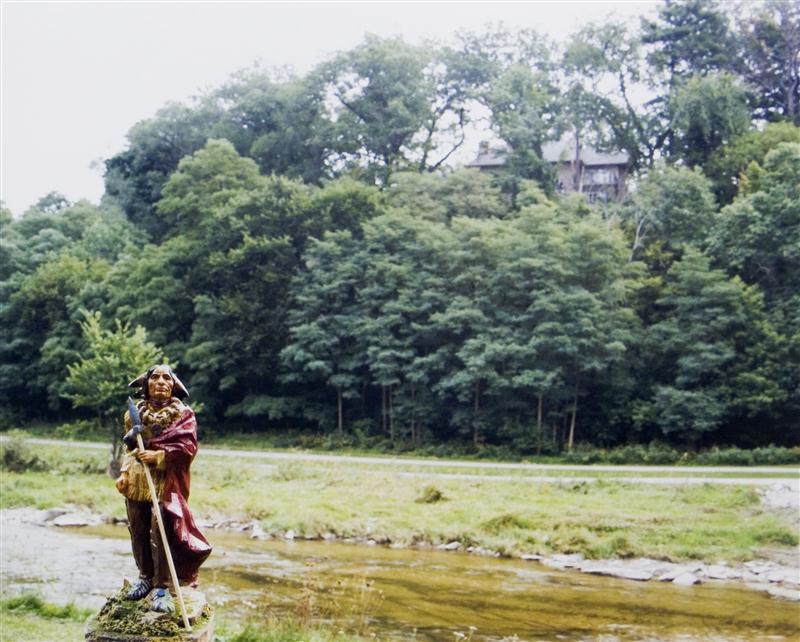
[34] • 2005 • In this work by Jeff Thomas, The Delegate bears witness to the Humber River, named after an estuary in Northern England. •
[36] • 1969 • Eddie’s head, body, and mount washed up at the waterfront by way of a philanthropic Toronto businessman, where the body parts lay dismembered, mouth gagged, until public donations could be collected to attempt his reanimation in a park. •
Humpty Dumpty —
Humpty Dumpty sat on a wall,
Humpty Dumpty had a great fall.
All the king’s horses and all the king’s men
Couldn’t put Humpty together again. •
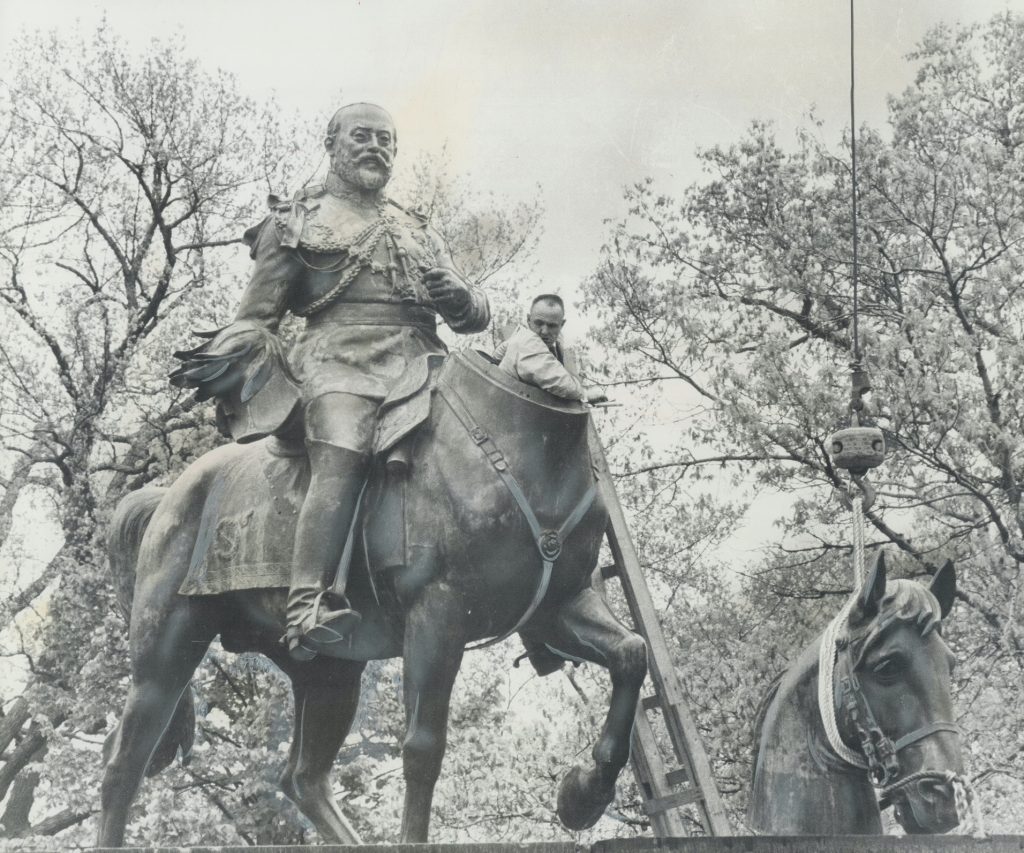
[37] • 1969 • Sufficient alms having been collected, Eddie’s head was reattached to his body and he was placed back on his mount. The washed-up prince was propped up in the dead centre of a park that Edward himself had opened and named after his mother, another pitiable waypoint on a long and unceasingly pitiable career. The businessman responsible was Harry Jackman, of the appropriately titled “Empire Life Insurance”. •
[39] • 1993 • Protesters on University Avenue bearing signs that say, among other things, “Shut Down The Heritage Front” and “Unite to Fight Racism” are beaten back by the mounted figure, who has decided to don the helmet he has been carrying and unsheathe his weapon. •
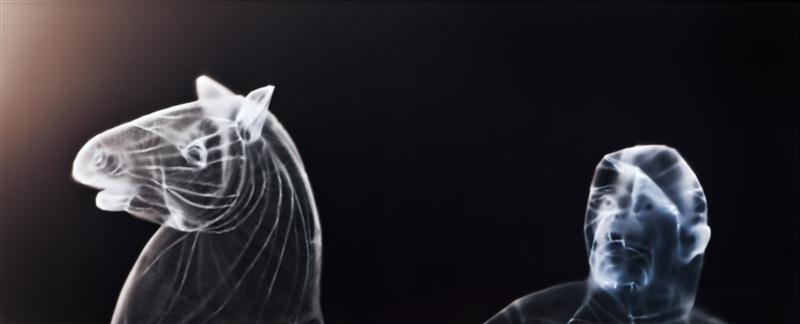
[41] • 2007 • This is a photogram, meaning it was created by directly exposing a light-sensitive material to light without the use of a camera. If the material is sufficiently slow, it can capture images outdoors. Here, it has captured this restless apparition of man and horse. •
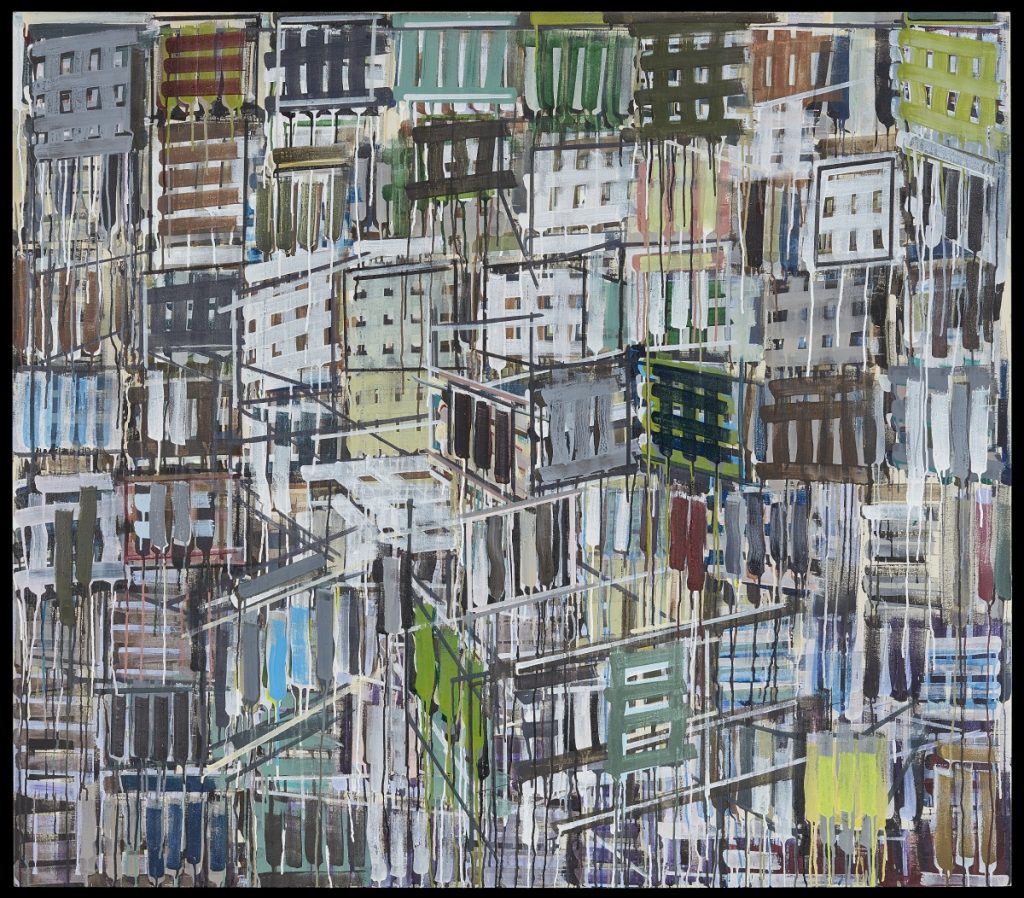
[42] • 1999 • This painting, titled “Dismantle #1”, by Denyse Thomasos, seems to consist entirely of fences and barriers of different forms, shapes, sizes, and colours, until the background is entirely obscured, if there exists any background at all. The painting is forbidding, but perhaps also inviting, asking us to consider what we might see if we cleared just one of the fences, or a few. •
[43] from Dictee by Hak Kyung Cha
Why resurrect it all now. From the Past. History, the old wound. The past emotions all over again. To confess to relive the same folly. To name it now so as not to repeat history in oblivion. To extract each fragment by each fragment from the word from the image another word another image the reply that will not repeat history in oblivion. •
[45] • 2019 • A fictional Mi’kmaq reserve finds that residents are immune to a zombie plague but must deal with the walking dead around them. •
[46] A Walk with a Zombie by Cassity —
If in my eyes the light is less,
Yours, Pharaoh, have not looked on loss
As mine have looked. Eyes over eyes,
The gold above the wood, their ooze
Below of sockets soaked in myrrh,
Make bright for you what heirs immure.
I, with my orbs of starting stone,
Half-bloodless shackle wounds, sustain
One blood unmummied: living wound
Of armless mills that mock the wind,
Of syruped words I cannot say,
Of bladed cane I cannot see. •
[47] • 1996 • He has suffered various indignities while he has been up there: his horse’s enormous testicles are painted every year by local teenagers and then cleaned by the city, making them the only things that still shine bronze. His unseeing eyes have been, at night, frequently witness to young gay people enjoying each other’s bodies in a manner that the Empire continues to find morally reprehensible. Every few years, Eddie’s body must come down to be bathed, brushed, and re-embalmed, at taxpayer expense. •
[48] • 2007 • In this episode of Dr. Who, two friends are pursued by statues that only move when they are not being looked at; they cannot turn away from the statues, cannot blink, for fear of what the statues might do when they are not looking. •
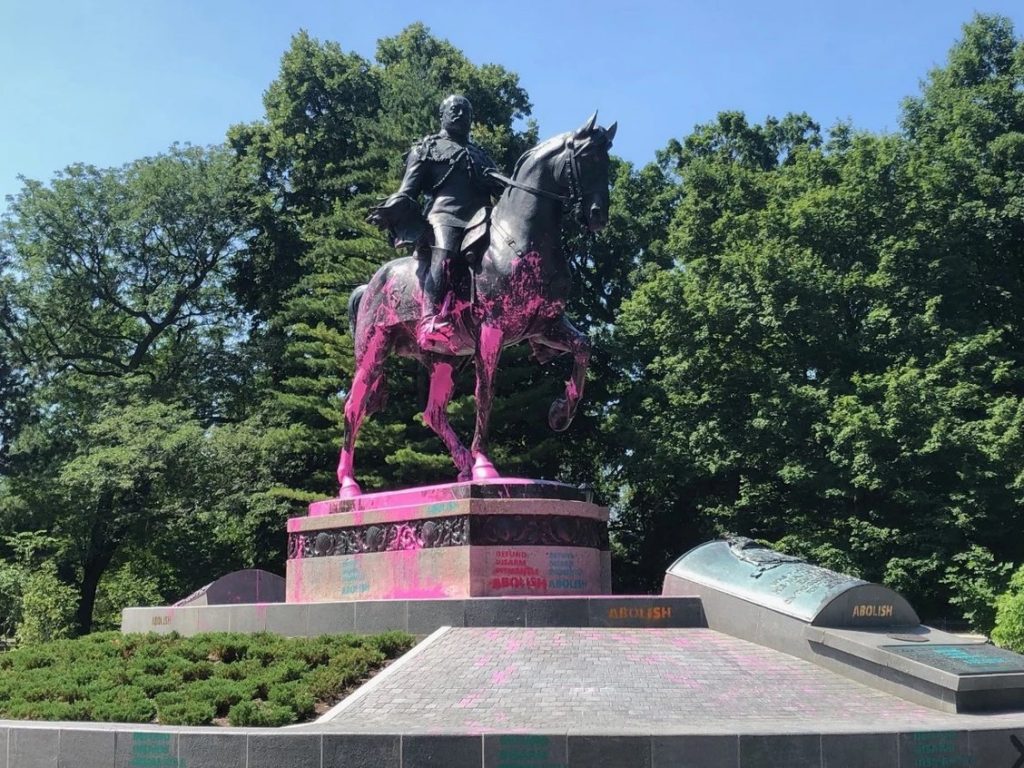
[49] • 2020 • This photograph was captioned “Protesters vandalized the King Edward VII Equestrian Statue at Queen’s Park in Toronto, Ont., on Saturday, July 18, 2020”.
[50] from Thieves and Vandals as Agents of Deterioration,
under Preservation & Conservation of History & Heritage
by the Government of Canada —
There are two primary threats that can affect an institution’s security: theft and vandalism. […] Vandalism is the wilful or premeditated inflicting of damage to an asset, which may include destruction or disfigurement.
[49] • 2020 • This definition provides two things: the meaning of the word “vandalism” (to inflict damage to an asset) and the purpose of the word (to label threats to the security of the institution). Not only is Eddie’s corpse not an “asset” — being the trash of a post-colonial nation — what institution’s security could it be vital to? •

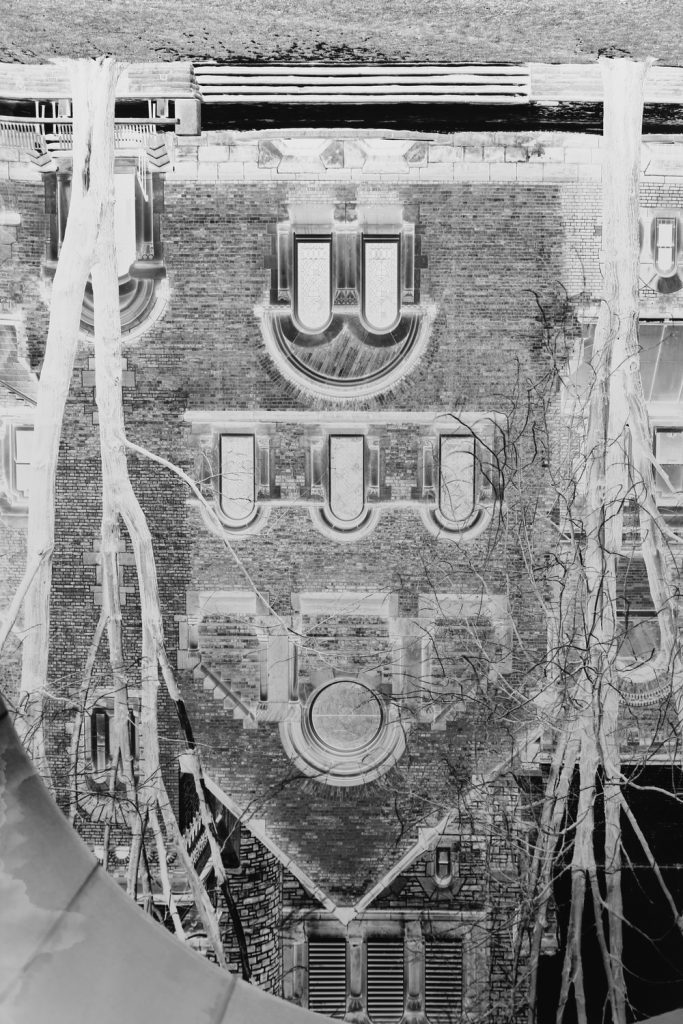
[51] • 1947 • (The year India gained its independence). A monument is not the empire, only a visible one of the empire’s many surfaces. •
[52] from Black and Blur by Moten —
Monuments are meant to put us in mind of something. To be put in mind is a strange construction. To be reminded, to have something brought to one’s mind, to have something put in one’s mind, is articulated as one having been put in (the) mind of the thing of which one is reminded. […]
Do you remember or are you that memory?

[53] • 2017 • This photograph shows Yusra Khogali of Black Lives Matter Toronto in front of Queen’s Park, after a two-week encampment at Toronto Police Headquarters. •
[54] • 2013 • The empire’s surfaces continue, some on the surface and some underneath. Some lie below the monuments, where “memory” and “history” is continually being made. •
[55] • 2014 • This work by Erika DeFreitas, “so buried in it that we only see them when pulled out in abstractions”, is the outline of a shroud covering a body. Seen in isolation, we consider the plight of poor Eddie, an attempt to make the silly grandiose, torn down, cast out, swept away, dismembered, remembered, reinstalled with a sign that conceals and yet still signals his humiliation. Help him down, won’t you? •
[56] • 1969 / ???? • A photograph is a moment taken out of the flow of time. Without context, it is impossible to say whether it is the precondition or the result of the event in question. Is this a photograph of Eddie being installed or of Eddie finally being helped down? When are you reading this? •
[57] Obligations 2 by Long Soldier —
As we
embrace resist
the future the present the past
we work we struggle we begin we fail
to understand to find to unbraid to accept to question
the grief the grief the grief the grief
we shift we wield we bury
into light as ash
across our faces
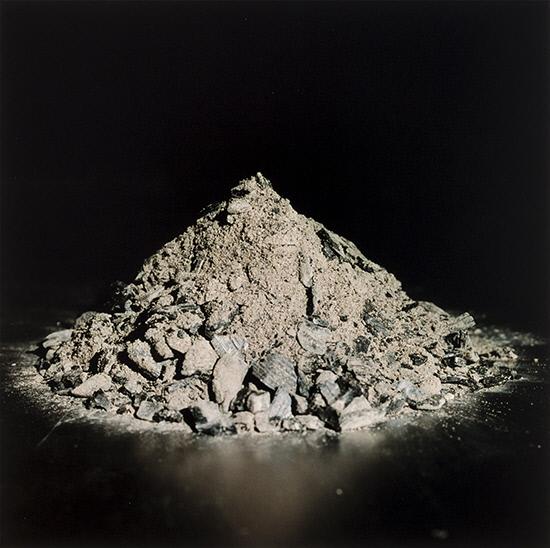
[6] • 1995 • This photograph is from a series titled “The Fallen Body”, by Eldon Garnet. The corporeal form, lacking spirit, and absent the desperate and morbid artifice of intervention, eventually decays into dust: a site of history, of possibility, where futures kept at bay can grow, free not from history, but from dogma. •
This project was written and curated by Ameen Ahmed, and published online with the help of Kaitlyn Simpson.
References
Introduction
1. Benjamin, Walter. “Theses on the Philosophy of History (VI)” in Illuminations. 1969. Pantheon: New York. p255.
Front Page
2. Lull, Pindi. “Unveiling of the King Edward VII statue …”. 1922. Royal Collection Trust, London, RCIN2702650.
I
3. Winterhalter, Franz Xaver. “King Edward VII …”. 1846. Royal Collection Trust, London, RCIN404873.
4. Ridley, Jane. Bertie: A Life of Edward VII. 2012. Random House: London. p40
5. Ibid. p88
6. Ibid. p79
7. Adams, Martin. “Figure of King Edward VII”. 1977. Victoria & Albert Museum, London, S.617-2019.
8. Ridley, Jane. The Heir Apparent. 2013. Random House: New York.
9. Weintraub, Stanley. Edward the Caresser. 2001. Free Press: New York.
10. Gorrie, John. From Episode 7 of Edward the Seventh. 1975. Associated Television.
11. Keppler, Udo J. “Edward Rex”. 1901. Library of Congress, Washington, D.C., LC-DIG-ppmsca-25506.
II
12. Henige, David P. Princely States of India: A Guide to Chronology and Rulers. 2004. Orchid Press: Bangkok.
III
13. Brock, Frederick. Thomas Brock: Forgotten Sculptor of the Victoria Memorial. 2012. AuthorHouse: Bloomington. p129
14. Brock, Thomas. “Edward VII”. 1911. Royal Collection Trust, London, RCIN47344.
15. Shelley, Percy Bysshe. The Complete Poetical Works of Percy Bysshe Shelley. 2003. Project Gutenberg. #4800.
16. Barbauld, Anna Lætitia. Eighteen Hundred and Eleven, A Poem. 2004. Project Gutenberg. #14100.
17. Bedford, Francis. “The Colossi on the plain of Thebes …”. 1862. Royal Collection Trust, London, RCIN2700892.
IV
18. Disorders Inquiry Committee. Disorders Inquiry Committee 1919-1920 (Report). 1920. Wikimedia Commons. Link.
19. Ibid. p188-189
20. Ibid. p208-209
21. Truth and Reconciliation Commission. Canada’s Residential Schools: The History, Part 1 (Origins to 1939) — The Final Report of The Truth and Reconciliation Commission of Canada, Volume 1. 2015. National Centre for Truth and Reconciliation. Link.
22. Ibid. p288-289
23. Sklarew, Myra. Monuments. 2004. Poetry Foundation. #52950.
24. 1919. Hart House, Toronto, Celebrating Hart House’s 100th Birthday.
25. Booth, Pringle &. “Hart House: The Grandrangle [Incomplete]”. 1919. Toronto Star Archives at the Toronto Reference Library, Toronto, tspa_0115837f.
V
26. Mani, Rajeev. “Rare letters of Subash Chandra Bose …”. January 23, 2020. The Times of India, Link.
27. Muthuramalingam, Vivek. 2021. Commissioned for Statues Also Die.
28. Ibid.
29. Ibid.
30. Jagdish, Sudhakar. “Dreams born in graveyard of statues”. April 1, 2018. The Indian Express, Link.
31. Muthuramalingam, Vivek. 2021. Commissioned for Statues Also Die.
VI
32. Thomas, Jeff. “Indians on Tour: Buffalo Dancer at Global Anarchy, Toronto, Ontario”. 2001. ArtMuseum at the University of Toronto, Toronto, 2006-036.
33. Tagore, Rabindranath. The English Writings of Rabindranath Tagore. 1994. Sahitya Akademi: New Delhi. p320 34. Thomas, Jeff. “Indians on Tour: The Delegate at Humber River, Toronto”. 2005. ArtMuseum at the University of Toronto, Toronto, 2006-039.
35. Toronto Daily Star. “Page 23”. July 29, 1958. ProQuest Historical Newspapers: Toronto Star, provided by Toronto Public Library, Toronto, 1425709483.
36. Toronto Daily Star. “Page B6”. April 5, 1969. ProQuest Historical Newspapers: Toronto Star, provided by Toronto Public Library, Toronto, 1419083640.
VII
37. Geo, Mario. “Head man on the job”. 1969. Toronto Star Archives at the Toronto Reference Library, Toronto, tspa_0114370f.
38. Dutton, Don. “Mounted police were used today …”. 1977. Toronto Star Archives at the Toronto Reference Library, Toronto, tspa_0016474f.
39. Welsh, Moira. “Courthouse clash”. 1993. Toronto Star Archives at the Toronto Reference Library, Toronto, spa_0012193f.
40. Toohey, Tannis. “Tourists take photos through …”. 2010. Toronto Star, Toronto, Link.
41. Streicher, Max. “Head and Horse Photogram”. 2007. ArtMuseum at the University of Toronto, Toronto, UC790.
VIII
42. Thomasos, Denyse. “Dismantle #1”. 1998. ArtMuseum at the University of Toronto, Toronto, HH1999.001.
43. Cha, Theresa Hak Kyung. Dictee. 1982. Tanam Press: New York. p33
44. Town, Harold Barling. “[not titled], “Mythologies” series [warrior attacking a statue]”. 1956. ArtMuseum at the University of Toronto, Toronto, 2002-122.
45. Barnaby, Jeff. Blood Quantum. 2019. Elevation Pictures.
46. Cassity, Turner. “A Walk with a Zombie” in Poetry. March 1976. p348
47. Spremo, Boris. “Monuments — King Edward VII”. 1996. Toronto Star Archives at the Toronto Reference Library, Toronto, tspa_0114369f.
48. MacDonald, Hettie. Episode 10 of Series 3 of Dr. Who. 2007. BBC One.
IX
49. Doroszuk, Ernest. “Protestors vandalized the …”. 2020. Toronto Sun, Toronto, Link.
50. Tremain, David. Agent of Deterioration: Thieves and Vandals. 2020. Government of Canada. Link.
51. Beament, Thomas Harold. “The Iceberg”. 1947. ArtMuseum at the University of Toronto, Toronto, HH1989.008.
52. Moten, Fred. Black and Blur. 2017. Duke University Press: Durham. p170
53. Morgan, Jalani. “The Sum of All Parts: 1. Yusra Khogali, fist raised in front of Queen’s Park after a two week encampment at Toronto Police headquarters”. 2017. ArtMuseum at the University of Toronto, Toronto, HH2018.002a.
54. Wright, Andrew. “When Buildings Take Pictures of Themselves (Part III)”. 2013. ArtMuseum at the University of Toronto, Toronto, UC847.
X
55. DeFreitas, Erika. “so buried in it that we only see them when pulled out in abstractions (No. 1)”. 2014. ArtMuseum at the University of Toronto, Toronto, HH2016-004.
56. Spremo, Boris. “King Edward’s mount arrives”. 1969. Toronto Star Archives at the Toronto Reference Library, Toronto, tspa_0114367f.
57. Long Soldier, Layli. “Obligations 2” in New Poets of Native Nations. 2018. Graywolf Press: Minneapolis.
58. Salmon, James Victor. “Queen’s Park, bandstand”. 1952. Toronto Reference Library, Toronto, PICTURES-R-86.
59. “Unemployed workers sleeping in the bandstand”. 1938. Archives of Ontario, Toronto, F_10-2-3-17. [link to ]
60. Garnet, Eldon. “untitled [The Fallen Body series]”. 1995. ArtMuseum at the University of Toronto, Toronto, 1996-115.









